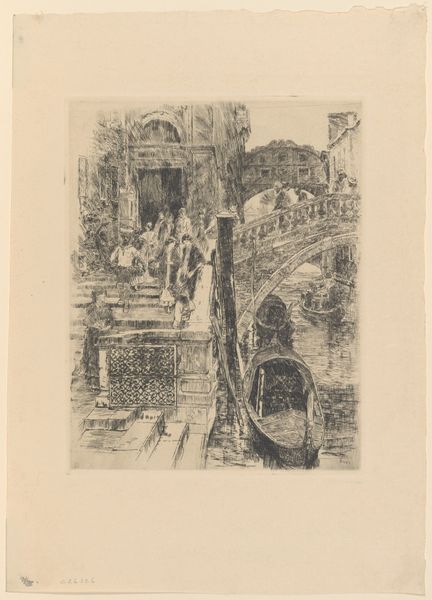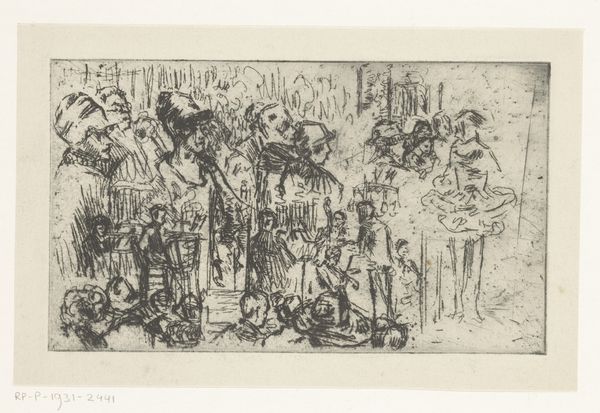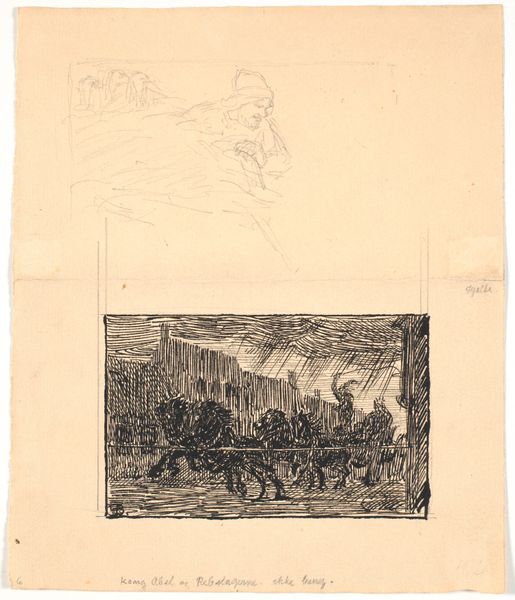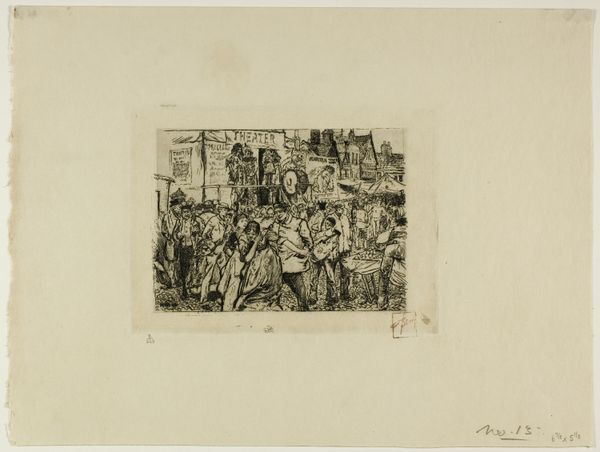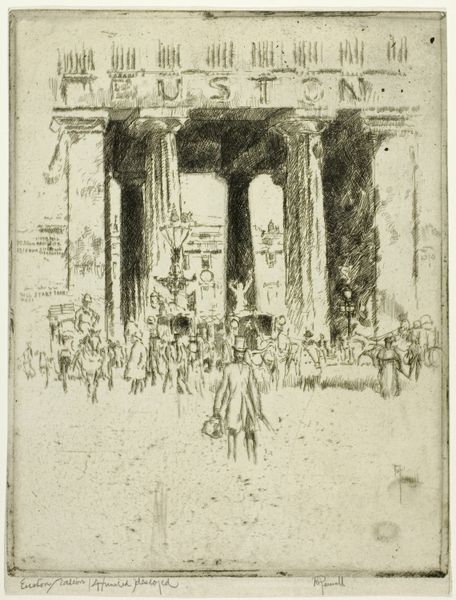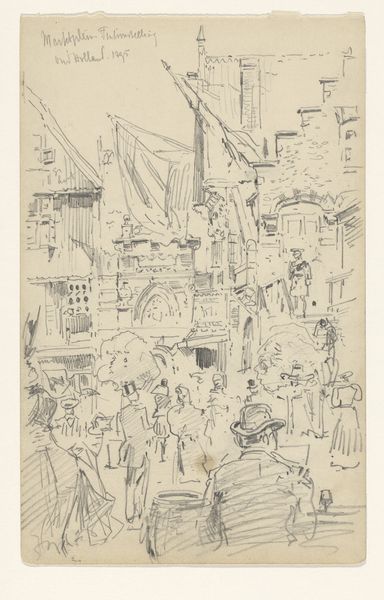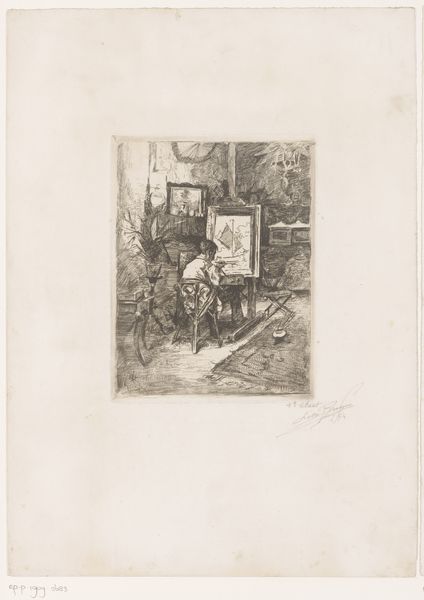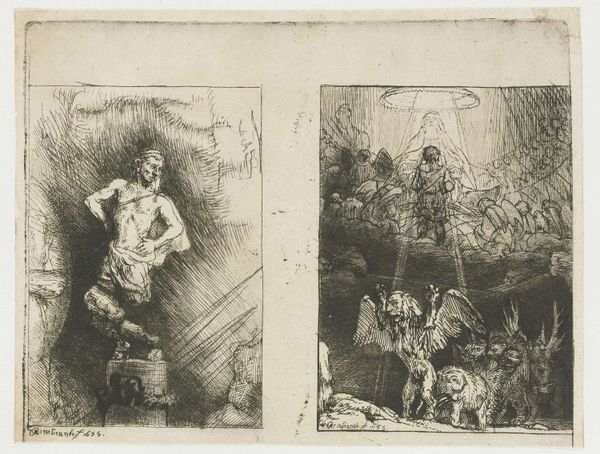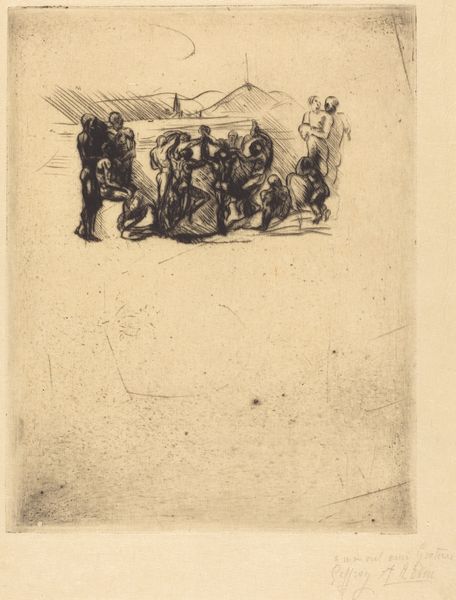
drawing, print, etching, paper
#
drawing
#
narrative-art
# print
#
impressionism
#
etching
#
etching
#
paper
#
cityscape
#
genre-painting
Dimensions: 232 × 142 mm (image); 315 × 238 mm (plate); 365 × 255 mm (sheet)
Copyright: Public Domain
Curator: Welcome! We are standing before Félix Hilaire Buhot’s print titled "National Holiday," created around 1878. The artwork gives us a snapshot into the social fabric of late 19th-century France. Editor: It strikes me immediately as quite busy! So much hatching and cross-hatching—the lines are vibrating with activity, almost mimicking the sensory overload of a crowded street scene. There is no sense of stillness at all. Curator: Absolutely. Buhot was fascinated by depicting modern life. Consider the period - the Third Republic was still relatively new. National holidays became important for solidifying a sense of collective identity after the Franco-Prussian War. We can analyze this artwork as an emblem for France's rebuilding optimism during this moment in history. Editor: Note how Buhot masterfully controls the light through varying densities of lines. The foreground, filled with these energetic strokes, throws a sense of hazy light on the celebration. Also the loose, seemingly unfinished sketches around the edges feel integral. Like the fleeting thoughts, and unnoticed individuals at the periphery of a major public event. It's an unconventional framing technique, too, that contributes to that bustling affect. Curator: These 'sketches,' as you describe, also point to the printmaking process itself. Buhot was a master etcher, constantly experimenting with techniques. Here, the marginalia is as important as the central scene—almost like notations in a sketchbook, it’s about capturing a feeling, a cultural environment, more than literal precision. Consider his use of drypoint and aquatint that allowed Buhot to create a unique set of atmospheric conditions. Editor: It’s remarkable how he builds depth, wouldn't you say? Leading us from those sharply rendered children right into the indistinct crush of figures lining the avenue. And notice how those small pops of black ground the overall airy aesthetic—there’s an intriguing dialogue between form and the reality, which underscores the festive, rather joyous energy. Curator: What strikes me most about "National Holiday" is its testament to a new, collective French spirit and celebration, even if that sentiment seems to sit contiguously within a scene created with a formal mastery, which renders the whole scene emotionally more lively and intimate. Editor: Agreed! The mood of the crowd scene, juxtaposed to the artist's etching method really generates that sensory immersion of public festivals, right? An excellent portrayal overall of festivity as a theme through formal elements.
Comments
No comments
Be the first to comment and join the conversation on the ultimate creative platform.

